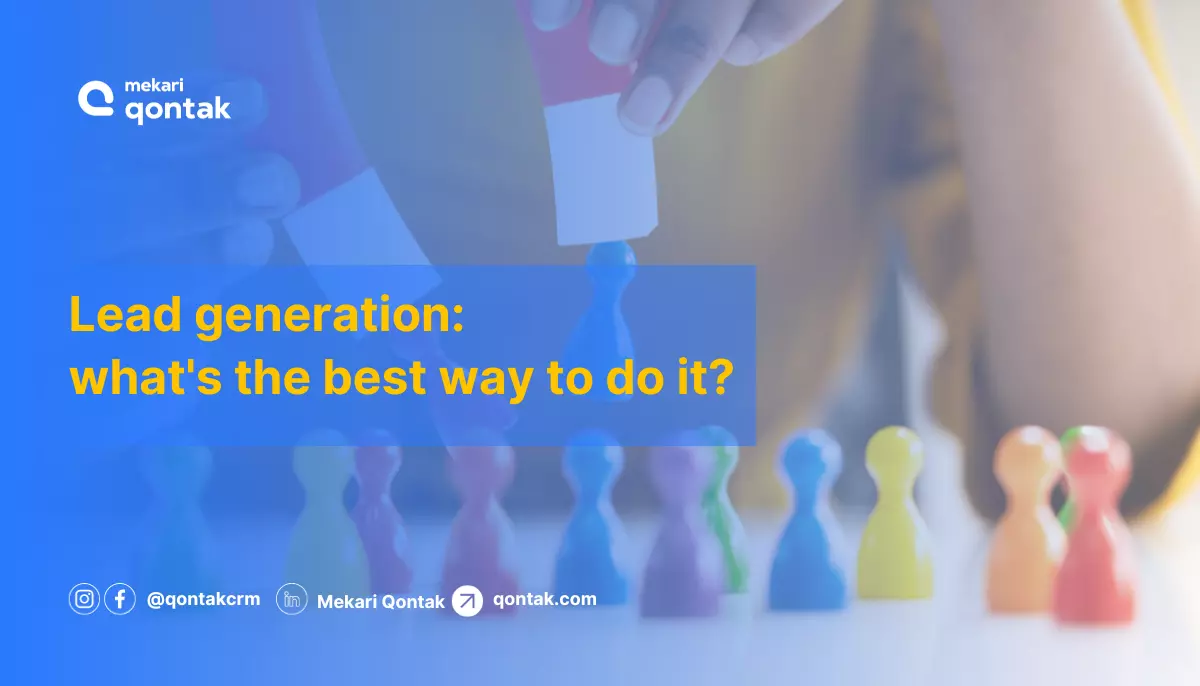
Customer experience (CX) refers to a customer’s overall perception of a company, from the moment they first interact with it to the moment they stop being a customer.
It’s a critical aspect of any business, as it can make or break a customer’s decision to continue doing business with a company.
A company that prioritizes CX has a significant advantage in today’s competitive landscape.
This article will explore customer experience, why it matters, and how to create a winning customer experience strategy. So, let’s dive in!
What is Customer Experience?
Customer experience refers to how a customer interacts with a business or shops there.
When customers explore the company’s website, interact with the company, buy, and provide feedback on its products, they are experiencing this experience.
Every stage passed through the customer journey will be assessed, whether satisfying or disappointing. This determines whether customers will be loyal to your business brand or not.
Why is Customer Experience Important?
The customer experience plays a vital role in the whole business, including increasing sales. A Business or company must provide customers with a good customer experience to gain loyalty.
It includes cognitive, affective, sensory, and behavioral responses throughout all stages of the consumption process, from pre-purchase to post-purchase.
Therefore, businesses need to know customers’ needs to provide the best experience.
What is a Good Customer Experience?
A good customer experience is one in which customers feel valued and satisfied with their interaction with a company or brand.
Businesses can achieve this through a variety of factors, such as
- Accessibility: The ease with which customers can access information or contact your business.
- Competence: The competencies you can provide.
- Customer Recognition: Customers want to feel valued and respected by your company.
- Helpfulness: Provide responsively and solute customer assistance.
- Personalization: Customer comfort from the treatment or facilities that you have.
- Problem-solving: Resolving customer problems.
- Promise fulfillment: Keeping promises made to customers.
- Value for Time: Value the customer’s time.
Customer Experience Examples
In order to better understand what customer experience means, we’ll explore both positive and negative examples of customer experiences.
Positive Customer Experience Example
A customer searches online for a retailer with a particular garden tool. They decide to place an order when they come across a website with what they are looking for.
The website is simple to use, and customers can easily find their desired product. They can also efficiently complete the checkout process and select the preferred shipping method.
The customer receives an email confirmation with all pertinent information, and the order is processed quickly.
They can monitor the progress of their order as it is shipped to them by receiving a follow-up email a few days later that contains information about the tracking system.
The product is in excellent condition and exactly what the customer expected when it arrived. They are pleased with their purchase and think shopping online is easy and effective.
Negative Customer Experience Example
When placing an order for a product from an online retailer, the customer selects a shipping method that promises delivery within a predetermined time.
However, the product arrives late, and the customer cannot obtain a satisfactory response from the retailer when they inquire about the delay.
The representative for customer service is unable to provide any information regarding the product’s delivery date, so they should be more helpful and apologetic.
The customer is irritated and dissatisfied, believing that the retailer must still fulfill its guarantee of prompt delivery.
Due to the negative experience, the customer may not shop with this retailer again in the future.
How to Measure Customer Experience?
There are at least 5 Metrics that are usually measured in Customer Experience, as follows:
1. Customer Satisfaction (CSAT)
Customer Satisfaction Score (CSAT) helps measure how happy or unhappy a customer is with your overall service.
This is usually for a specific feature in your product, such as solving a problem or returning a product.
Send customers a short survey as soon as they interact with you. The survey asks customers to rate their satisfaction with your product on a scale of 1 – 10. Then, divide the sum of the scores by the total number of respondents.
2. Net Promoter Score (NPS)
Net Promoter Score (NPS) is how many customers are likely to recommend your product to friends or colleagues.
Frequently, this metric will be measured on a scale of 1 – 10. Respondents can be divided into detractors, neutrals, and promoters.
Those who answer 1-6 are detractors, 7-8 are neutral, and 9-10 are promoters.
3. Customer Effort Score (CES)
This CX metric determines how much effort your customer needs to put in to complete a task.
This can be anything from handling support requests to finding the product or service they are looking for. CES is a transactional metric that measures how easy it is for your customers to find something.
4. Customer Retention Rate
The customer retention rate measures how many customers stay with your business for a certain period or continue to pay for your services. It is highly related to your churn rate.
Customer retention can indicate when customers will stop using or paying for your services.
This can be measured in a week, a month, or a quarter. You can also see how retention affects various audience segments.
5. Customer Churn Rate
Churn rate is a CX metric to measure how many customers leave your business over a specific time or no longer pay for your services.
Keeping an eye on the churn rate is crucial, as finding new customers is more expensive than keeping existing ones.
The lower the churn rate, the more loyal customers you will have.
What is Customer Experience Management?
Customer experience management (CEM) transforms how customers interact with a company or brand.
It involves understanding the customer’s needs, preferences, and expectations and using this information to improve the customer’s journey through the various touchpoints with the company.
CEM involves many activities and strategies, such as collecting and analyzing customer feedback, identifying pain points in the customer journey, and creating customer-focused policies and procedures.
Online Customer Experience Management
The term “online customer experience management” refers to ensuring customers have a positive online experience when interacting with a company’s website, social media accounts, or online customer service channels.
This can involve:
- Designing and maintaining a user-friendly website.
- Providing good customer service through online channels.
- Responding to customer feedback and reviews.
- Providing clear information about products and services.
- Using data to understand customer preferences and improve the online experience.
The goal is to provide customers with a positive and seamless online experience, which may contribute to customer loyalty and enhance the company’s business.
How to Make a Great Customer Experience?
There are several strategies that businesses can use to create a great customer experience:
- Get to know your customers: Utilize this knowledge to guide your customer experience strategies by understanding your customers’ requirements, preferences, and expectations.
- Concentrate on meeting and exceeding customer needs: Convey great items or administrations and give fantastic client care.
- Facilitate a smooth and enjoyable customer experience: Make it as simple as possible for customers to do business with you by identifying and addressing any pain points in the customer journey.
- Collect and use feedback from customers: Collect customer feedback regularly and use it to enhance the customer experience continually.
- Invest in customer-focused policies and procedures: Create and implement policies and procedures that highly value the user experience.
- Work with other teams and departments to collaborate: Make sure that every team and department is working toward the same goal: to give customers a great experience.
- Keep your word: Deliver an excellent customer experience consistently to cultivate customer trust and loyalty.
Customer Experience and Omnichannel
Omnichannel customer experience is the seamless integration of a business’s various customer touchpoints, such as its website, mobile app, social media, and physical stores, to provide a unified and consistent customer experience across all channels.
Omnichannel customer experience aims to provide customers with a streamlined and convenient experience no matter how they interact with the business.
For example, suppose a customer starts looking into a product on a company’s website and decides to buy it at a physical store.
In that case, the experience should be smooth and consistent. Businesses or companies should transfer the customer’s preferences and previous interactions from the online environment to the in-store one.
A company can better understand and serve its customers by implementing an omnichannel customer experience strategy. Omnichannel software allows them to collect and analyze data from all customer interactions across all channels.
As a result of this assistance in identifying and addressing any issues or challenges, the company may face. It can better tailor its marketing and sales efforts to meet the requirements and preferences of its customers.
In the end, a customer experience that spans multiple channels can contribute to increased customer loyalty and business expansion.
Conclusion
In conclusion, customer experience is essential to any business as it determines whether a customer will continue to do business with a company.
A good customer experience involves making customers feel valued, recognized, and satisfied with their interaction with a company or brand.
Understanding the requirements of their customers, taking into consideration their feedback, and continuously enhancing their customer journey are all essential components of a successful customer experience strategy
If you want to boost your customer experience, consider implementing an omnichannel strategy with Mekari Qontak.
With Mekari Qontak’s Omnichannel, you can seamlessly connect all of your customer touchpoints and provide customers with the convenience and consistency they expect, leading to increased satisfaction and loyalty.
Start improving your customer experience today with a free trial from Mekari Qontak!





